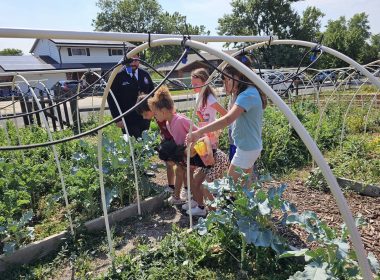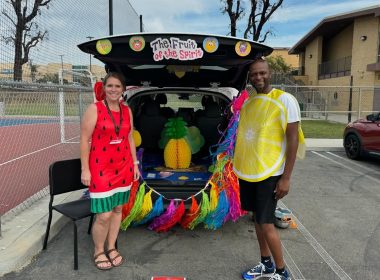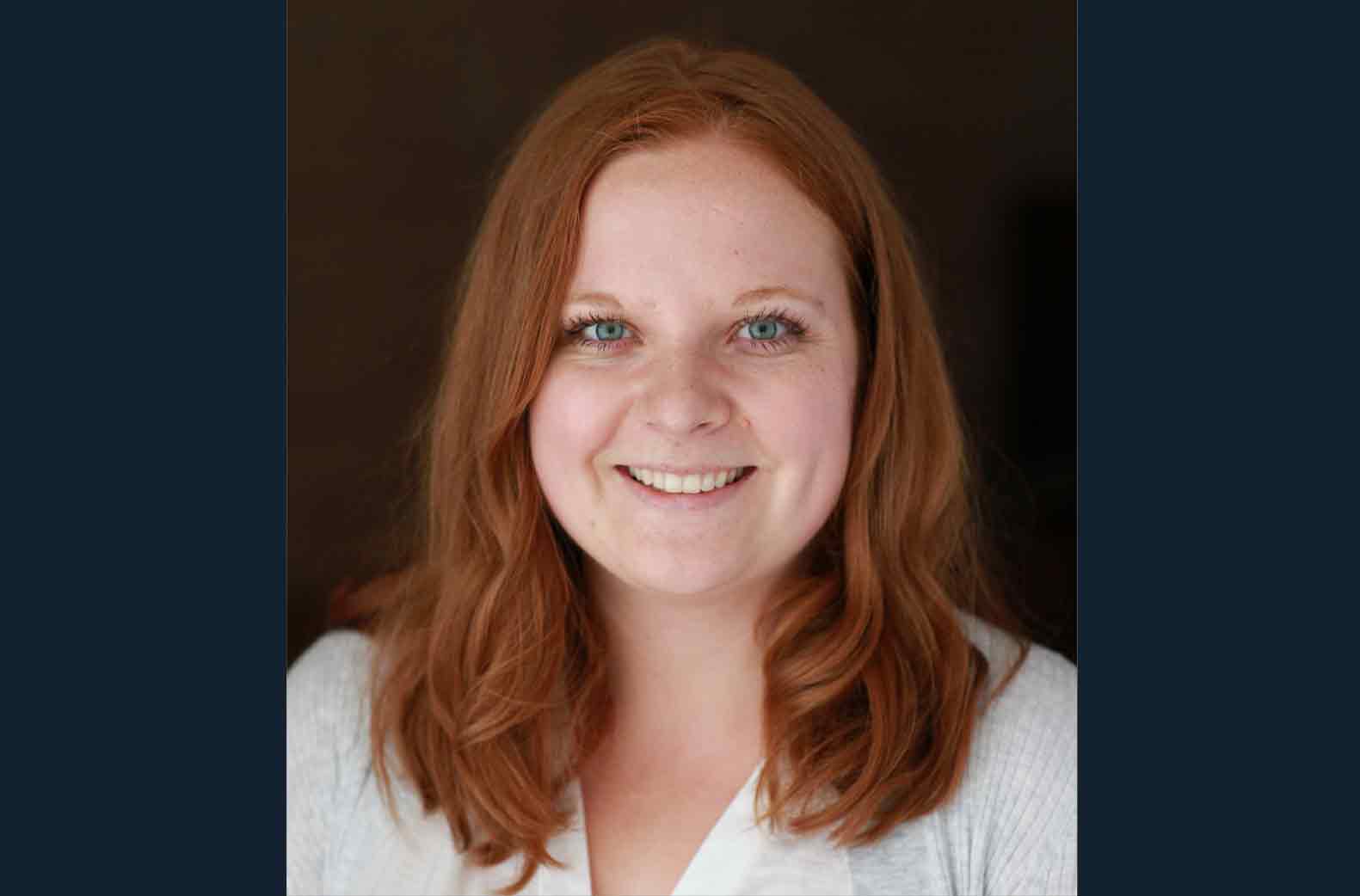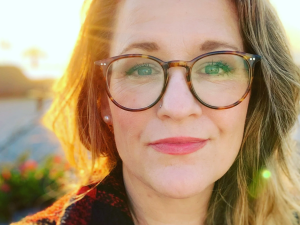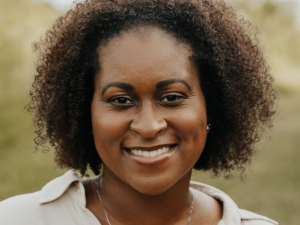That’s right—I am back again with a new episode of this podcast just for you today.
If you caught our programming note earlier this year, you will know I was out bringing a new little life into the world, my third baby boy. So I hope you enjoyed some of those rebroadcasted episodes and the chance to catch up on the more than 140 published episodes of this show. There really is so much goodness in this podcast library. And now I’m back, and we’ll have a whole lot of new episodes coming your way in the weeks ahead.
Sidenote: Be sure to subscribe to this podcast so you get each new episode as soon as they are released.
But first, I thought we’d do something different in this episode—and that’s give you a little behind the scenes of what happens in our office and a preview of what’s coming.
So I’ve invited Hillary Jackson, the managing editor of The Salvation Army’s Caring Magazine, my partner in publication if you will, to join me today.
Hillary also holds a master’s in specialized journalism from the University of Southern California Annenberg School for Communication and Journalism—we actually went through the same program. She’s written for the likes of The Washington Post, The Week and Architectural Digest, and has worked around the world covering the Olympics.
Today, we’re chatting about the magazine that this podcast is connected to and its goal, with a deeper look inside the making of our annual print edition that’s releasing now. You can find it at caringmagazine.org/belonging.
Plus, you’ll absolutely want to listen to the end for the special appearance of some of you who answered a question we recently asked about how you found your place in The Salvation Army.
So let’s get into it. Allow me to introduce to you today, Hillary Jackson.
Show highlights include:
- How we describe Caring Magazine.
- Why it is important for an organization like The Salvation Army to share its stories.
- More on the idea of “finding your place” in The Salvation Army.
- What it’s like to put together a print edition.
- Introducing the 2023 annual Caring print edition, “A Place to Belong.”
- The State of Belonging in America, according to a first-ever report.
- What’s exciting about this print edition.
- More on the tiny home effort to address homelessness.
- What you said about finding your place in The Salvation Army.
Listen and subscribe to the Do Gooders Podcast now. Below is a transcript of the episode, edited for readability. For more information on the people and ideas in the episode, see the links at the bottom of this post.
* * *
Christin Thieme: Well, Hillary, this is very fun. Welcome to the Do Gooders Podcast today.
Hillary Jackson: It’s great to be here.
Christin Thieme: We’re making you the official guest even though you’re very much part of this team. We thought this would be a fun way to introduce people to the print issue of Caring, and it’s a way for me to come back from leave with my little baby, just as you are heading out. Congratulations on your upcoming little guy.
Hillary Jackson: Thank you. It’s all very exciting.
Christin Thieme: Yes. Lots of things happening over here at Caring Magazine. Let’s start there. How would you describe Caring Magazine to someone who maybe wasn’t familiar?
Hillary Jackson: Yeah. Caring is a magazine from The Salvation Army in the Western United States, and we really seek to evidence the impact of The Salvation Army. So often, people don’t understand the full breadth of The Salvation Army. They’ll have heard about one aspect of it. Yes, it’s usually something that we do, but it’s not the full gamut. This is just one way of us trying to connect with people who could join us, whether that’s in ministry, in service, in volunteering, in giving. The magazine really seeks to tell those stories of all the great things that are happening out there in the West.
Christin Thieme: Yeah, it’s fun for us. I think people always ask what you do… It’s really fun in our role, because things are so different all the time that I think something that’s really unique about The Salvation Army is how many different things there are that go on out there. It’s kind of amazing, even working here for, I don’t know, I think it’s like 17 years I’ve worked now for The Salvation Army, but I still constantly am learning about new things that are happening, and really creative ways people are solving problems and trying to connect people, like you said, in communities. That’s kind of fun for us, I think.
Hillary Jackson: Definitely. Every day is just so different. Every story is so different. You think, how many times can I tell a feeding story? Sure enough, someone else is doing something out there that’s really innovative.
Christin Thieme: Yeah. With your journalism background, why would you say it’s important for an organization like The Salvation Army to share its stories?
Hillary Jackson: Yeah, I think it’s really interesting because so often, the heart behind our service, or I would say actually all the time, we’re not really out there trying to be like, “Wow, look at us. Look at everything that we’re doing.” It’s very much a humble approach, but people want to get engaged with these causes that we care so much about that we have dedicated programs to, but they have no way of knowing if we don’t communicate that.
I think it’s really important to tell these stories so that people can find connection, both with the cause itself, or with an easy way to get involved. This is a great way for that.
Christin Thieme: Yeah, exactly. The two words that we use the lot are we try to increase somebody’s awareness of The Salvation Army and all that it is and does, and to further and deepen their engagement with us. Yeah, story’s a great way to connect to people in whatever interest they might have. The nice thing is there’s probably a way for you to connect to The Salvation Army in that way, which kind of leads us into this idea of finding your place in The Salvation Army.
We’ve talked a lot about that concept over the last maybe year or so, this idea that there’s a place for you, whatever your interest or need, you can connect with The Salvation Army in that way. What’s your take on that idea?
Hillary Jackson: Yeah, I think like you’re saying, there’s so many different ways to get involved with The Salvation Army, and also, finding your place is a key part of belonging. As humans, belonging is one of our most basic needs. It’s in the Maslow’s hierarchy of needs behind food and shelter, which I like to think about because it’s very similar to The Salvation Army’s Founder, William Booth’s, approach. He knew that people couldn’t find that belongingness or have their spiritual needs met until their stomachs were filled, until they were housed. That’s similar ethos. I think finding your place with The Salvation Army, it can be obviously broader than that.
Yeah, you can be a beneficiary in a program, or a food box recipient, but there’s a place for you too if you’re a college student, an office worker or retiree, really anyone. I think too, one of the things that really comes to mind when I think of finding your place is the passage in 1 Corinthians about being one body, but many parts, and how each of us are really gifted in different ways.
I think The Salvation Army, there’s so many ways for you to get involved as you are, using the gifts that you’ve been given. Maybe that’s volunteering or being a mentor, participating in a local congregation, pledging your funds towards a program that you really align with the cause for. I feel like really finding your place is, the bottom line is you can find belonging here.
Christin Thieme: Yeah, absolutely. We’re now releasing our annual print edition. For context, if you are not familiar as a listener, this podcast is an extension of Caring Magazine, which is a magazine from The Salvation Army like we’ve been talking about.
Once a year, we print an edition of the magazine. We are sharing stories all the time online through our digital magazine, but once a year, we have a print edition that comes out. That is just now coming out. You can find that at caringmagazine.org/belonging. We would love for you to see it.
Hillary, what is it like to put together a print edition of a magazine? Give us a little peek behind the curtain of what goes into that process.
Hillary Jackson: Yeah, well, I think it’s really fun.
Christin Thieme: That makes two of us.
Hillary Jackson: Yeah, I think we’re the only two. I’m just kidding. Well, we start out a lot in advance trying to identify what our aim is. For this edition, obviously, we care a lot about demonstrating finding your place, finding belonging. Honestly, in some ways, it was quite easy to find stories to illustrate this, just because I think The Salvation Army is so welcoming. There’s so many opportunities for that. In terms of putting the paper, or not paper, I’m sorry, the magazine together, we looked for stories that really illustrate the breadth of The Salvation Army’s work in the Western U.S.
So often, people think of The Salvation Army as thrift stores and kettles, and yes, it is that, but it’s so much more. We seek through the magazine to demystify that a little bit, showcasing some of the key areas where The Salvation Army is making an impact, like homelessness, disaster, youth, seniors, hunger. Those are just a couple areas. We look for stories that illustrate that, that maybe are not just what you already know, or ideally, someone is taking away something or finding a way to get more engaged or involved with.
Christin Thieme: Yeah, absolutely. The through line, like you said, for this whole issue, we’ve titled it, “A Place to Belong.” As we were preparing for this issue, we actually came across a new research tool and report from Over Zero and the Center for Inclusion and Belonging at the American Immigration Council. It’s called the Belonging Barometer, the State of Belonging in America. The key takeaway from this first ever report that was published this year was that without a sense of belonging, individuals and communities suffer. With it, they thrive, which seems so obvious. Like you said, it’s one of our Maslow’s hierarchy of needs. We need to belong, but it’s not always quite that easy.
I found it really interesting that the researchers found majority of Americans report non-belonging. It was like 74 percent report non-belonging in their local community, and one in five people report non-belonging in any life setting that was measured. It’s one in five people that have no place that they say that they belong. In the context of finding your place, we’ve titled this issue “A Place to Belong.” Like you said, we go through some of those major impact areas of The Salvation Army, and different ways that the organization offers belonging, or has welcomed people in all kinds of different ways. What would you say is exciting for you about this issue specifically?
Hillary Jackson: Yeah, I just think, like you said, it’s just so obvious, this need that we have. Coming out of COVID, especially, where people felt such isolation in so many ways, I think this issue was really interesting to put together. Belonging is still happening in this Salvation Army. I think what’s so exciting about this issue to me is that, and maybe this is just a very basic thing, but it doesn’t just throw the stats at you. These stories that are connected to these causes that maybe you’ve heard, typically when they’re reported in the news, it’s just kind of doom and gloom. Homelessness, growing epidemic or hunger, people are having a harder time than ever to make end’s meet.
What’s exciting to me is that these are stories of real people who have had transformational experiences. They’re not just these transactional kinds of situations. They’re stories of how these people were brought in, or how they served, and really how they belong. That’s what it’s really all about. It’s just exciting to me that coming out of this long season of just like, I don’t want to call it purely doom and gloom, but for a lack of better phrasing, there is hope. There are people engaged, and I’m happy to work with them. I think it’s really exciting.
Christin Thieme: Yeah, absolutely. You wrote a feature story in the issue that is titled “From unhoused to (tiny) home.” Tell us more about the story that you wrote.
Hillary Jackson: Yeah, that story is one that is near and dear to my heart. It’s about the growing phenomenon of tiny homes and sheltering people experiencing homelessness. It’s something that The Salvation Army is doing more of in the Western U.S., but it’s also a growing trend across the country. As cities, they’re really trying to figure out how can they get engaged in addressing homelessness? Like I mentioned earlier, is a growing epidemic. While some methods work, we’re always trying to find new approaches.
This story was kind of personal to me because I was inspired to pursue it after conversations with my parents, who are based in Florida, and they’re involved in their community, in trying to help people experiencing homelessness. So often they’d be like, “Oh, what is The Salvation Army doing?” This was one thing that seemed really accessible from my opinion. I wanted to drill down deeper, if nothing else, to give them information.
Christin Thieme: Yeah. You’re welcome, Mom and Dad.
Hillary Jackson: Exactly. Now everyone can benefit.
Christin Thieme: That’s right.
Hillary Jackson: In the story, advocates share that the tiny home model can be helpful, because compared to, say, fundraising for a building that might take years to construct, which are still great, by the way, I don’t want to completely …
Christin Thieme: Yeah, those aren’t going away.
Hillary Jackson: They’re not going away. So often, and COVID showed us this too, you’re presented with an emergency situation, and you need to figure out a solution quickly. Maybe this isn’t a one size fits all situation, but these homes can be rapidly constructed at a lower cost. Obviously, you have to figure out electrical and that kind of infrastructure, but it solves some of those time, money elements that most people are strapped for.
Christin Thieme: Yeah.
Hillary Jackson: It’s not just like having an individual and sticking them in a home and calling it housed. There’s a big case management component where people are really getting the help they need so that hopefully when they leave, they will be self-sufficient. In the story, I spoke with Tim, who is based in Aurora, Colorado, and he called me from his own apartment that he had. He had gotten it after going through the tiny home program there in Colorado. Not only does he have his own apartment, and he was decorating it when I was talking to him, but …
Christin Thieme: With Hot Wheels, right? I think I remember.
Hillary Jackson: Yeah, he really likes Hot Wheel cars, but he also found community at the tiny home site, and that kind of helped spur him on. He still goes back to visit and maintains contact with his case manager. It’s that personal piece too. It’s not just giving someone a house, it’s that full wrap-around of support that we all really need.
Christin Thieme: Absolutely, yeah. You have to see these tiny homes. Make sure you take a look at the issue to see photos of them. They’re really like cool looking how they have come up with this little, I guess they call it a pallet shelter, right? How would you describe the actual structure?
Hillary Jackson: Yeah, it’s really interesting, because in most of the communities that The Salvation Army has in the West, we partner with Pallet Shelter, which is a manufacturer of these types of homes. They’re very small, these units. They’re eight by eight [feet], but they use a space very efficiently. There’s two beds. There’s air conditioning, electrical. It’s not just like a shed or something.
Christin Thieme: Yeah.
Hillary Jackson: I wish I could show you a photo.
Christin Thieme: I know. You just have to see it—caringmagazine.org/belonging. Take a look at the pictures of some of these tiny homes. We even have an infographic in there that shows you the inside the anatomy of a Pallet Shelter, which is pretty neat, and it gives you—your story, it’s great. It gives you the picture of how The Salvation Army is using these little communities of these tiny homes across the West right now and the impact that they’re making. It’s pretty good.
Hillary Jackson: Thanks. Yeah, you should give it a read.
Christin Thieme: Definitely. Obviously, that is something that you would highlight in this particular print edition. If you had to highlight maybe two other things in the issue, what would they be?
Hillary Jackson: Hmm. Yeah, I think it’s so interesting because I think so often, and this is just a broader concept I guess in the specific story, it’s just our stories highlight areas where The Salvation Army is making an impact. So often, these needs are needs that are ages old, and we’ve been engaged with them since the start, and it’s just we’re doing them in new and innovative ways. At the core is still the people and their humanity. Like I said earlier, it’s not transactional. It’s really transformational. It’s just that concept of, again, belonging.
Christin Thieme: Yeah.
Hillary Jackson: Then they’re also in so many of the stories, our themes of starting over and finding a new place. I think that really speaks to the bravery of the individuals who are sharing their story, and the sense of safety that they experienced with those that they’ve met through The Salvation Army. I think that really sticks out to me. Yeah.
Christin Thieme: I love it. Perfect. There’s one piece that I’ll specifically mention too, titled 11 Unique Ways That We Meet Needs. It’s kind of a perfect succinct picture of what we’ve been talking about in this entire issue, that there are so many vast ways that The Salvation Army meets needs and helps people, both with things that they might need, or getting connected in various ways. Listen for that as well on the podcast. We’re going to give you a rundown of those 11 unique ways in an upcoming episode. Overall, definitely, you just have to read the issue. That’s basically what we’re here to tell you.
Hillary Jackson: Definitely, yeah. It’s worth your time for sure. We’ve been working on it for a while, and I think you’ll find it really interesting and hopefully walk away with some more information.
Christin Thieme: Yeah, absolutely. Again, if you missed that, head to caringmagazine.org/belonging so that you can read the issue in its entirety. In this episode, we wanted to end on one other thing from the issue. There is a piece in there titled “There’s a place for you,” kind of what we’ve been talking about this whole episode, where we wanted to illustrate the various ways people get connected to The Salvation Army, and why they stay part of it. We sent out a survey asking how you found your place in The Salvation Army, and what makes you feel like you belong?
Significantly more than any survey we’ve ever done, we had hundreds of responses to it. People clearly feel like they are connected to The Salvation Army, which is really cool to see. The way that they’re connected is so different, and obviously so meaningful for so many of these people. We’ve highlighted a number of them in this issue, their direct quotes, stories of their own transformation, of being homeless and finding The Salvation Army, of volunteering to serve a Thanksgiving dinner and then staying connected, of being referred by a probation officer, even somebody who broke down while they were traveling, and The Salvation Army let them sleep in their parking lot and gave them food in their car.
Just so many different ways that people have met The Salvation Army, and why they have stayed connected for the long haul. I think it’s really representative of who and what the organization is and why we do what we do, that there is a place for you, wherever you’re coming from and whatever you need. Some of those people have agreed to share here on the podcast what their own perspective is. We are going to close out this show with their words.
Listen in to hear these closing comments from the respondents directly.
Additional resources:
- Read the latest annual print edition of Caring Magazine, “A Place to Belong,” at caringmagazine.org/belonging.
- Find more on belonging in the “Belonging Barometer: the State of Belonging in America,” a report from Over Zero and the Center for Inclusion and Belonging at the American Immigration Council.
- Get inside the Caring Magazine Scripture Study Collection and find a suite of free, downloadable Bible studies to guide you through topics from New Beginnings Through Forgiveness, to Understanding our Imago Dei or Life Hacks From David.
Listen and subscribe to the Do Gooders Podcast now.



